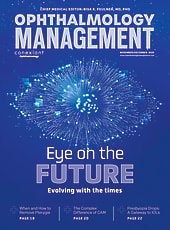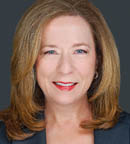In today's ophthalmology practices, managing generational diversity has become an ongoing challenge for our teams and leaders. At See Vision Eye Institute, our workforce spans 4 generations—baby boomers, Generation X, millennials and Generation Z. Each brings unique perspectives, communication styles and expectations to our workforce. For practice leaders, understanding and leveraging these differences can enhance collaboration, improve patient care and longevity, and create a harmonious workplace.
Understand Generational Differences
Social, political, cultural and technological influences all play a critical role in shaping each generation. These crucial influences impact communication, work styles and interactions. Because each generation shares joint experiences and influences, behavior patterns can emerge associated with each group.Despite commonalities among generations, it is dangerous to stereotype or assume that everyone of a particular generation is alike. These assumptions can shut down communication. The goal is to listen with the intent to understand and recognize that regardless of when we were born, we can learn and benefit from each other's experiences.
Here is a brief overview of each generation and their common traits:
• Baby boomers (born 1946-1964): They grew up during an economically prosperous but tumultuous time of social change. Many were instrumental in driving social justice movements that challenged societal norms. They are seen as hardworking and loyal, value face-to-face communication, prefer hierarchical structures and often define themselves by their work.
• Generation X (born 1965-1980): This generation is known for being independent and resourceful. Having grown up during economic uncertainty and shifting social norms, they are often pragmatic and skeptical. As the first generation of young adults with access to personal computers and the internet, many are comfortable with technology but often value analog traditions. They frequently seek work-life balance and are usually equally comfortable with in-person and digital communication.
• Millennials (born 1981-1996): Millennials are known for being tech-savvy and collaborative. They grew up with the internet and cell phones. They value purpose-driven work, want regular feedback and thrive in team environments. However, they often seek quick results and advancement. Flexibility and innovation are essential drivers for this group.
• Generation Z (born 1997-2012): As the first digital native generation, Generation Z has never known a world without smartphones and social media. They value diversity, inclusivity, and authenticity but may resist traditional organizational hierarchy. Generation Z expects transparency and instant communication and often favors short, text-based interactions.
Start From the Beginning
We must focus on individuals' strengths and bridge generational gaps to build strong communication. This requires creative leadership that recognizes our teams' distinct communication styles. There are many ways to communicate, from traditional methods such as phone and in-person meetings to written formats like email and reports, as well as digital platforms for instant messaging and video calls. Leaders should help teams adapt to these methods to reach all audiences effectively.
Regular one-on-one meetings with team members are a key part of my leadership. These meetings help me understand each person's goals and communication style while supporting their career growth. They also allow us to discuss any biases and preferences. By knowing these preferences and setting communication standards, we can reduce misunderstandings and ensure messages are clear.
Adopt Communication for the Purpose
In team meetings, we discuss communicating effectively to maintain clear standards. We use email and our company intranet for important announcements and information to memorialize for future reference. We have active all-company, department, and individual Teams channels we use when we need a quick response. Since much of our work involves connecting with people across different locations, video meetings are now standard. We treat these meetings like in-person ones and keep our video on. While digital communication helps a lot, it can also lead to misunderstandings. There is no substitute for an in-person meeting for crucial, high-stakes conversations.
Create Opportunities for Cross-Generational Mentorship
Each generation brings unique skills and experiences that can benefit the team. After uncovering each person's communication styles, I look for opportunities to develop inter-generational collaboration. For example, a baby boomer could play a key role in mentoring a Generation Zemployee by helping them navigate the organization and fostering skills like working with surgeons and communicating across teams. This type of institutional knowledge is invaluable, especially for many Generation Z employees who missed out on these experiences due to the disruptions of quarantine and now deeply crave such growth opportunities.
In return, a Generation Z employee may be able to help her baby boomer coworker navigate and leverage the practice's technology tools more effectively. By sharing their expertise, Generation Z employees can help streamline workflows, increase efficiency, and enhance the Baby Boomer's confidence in using digital solutions.
Acknowledge Differences Without Bias
One of the most important things we can do as leaders is to approach generational differences with curiosity. This applies to our employees and our communication with our patients.
In our practice, we implemented a digital check-in system. It would be easy to assume that our baby boomers and older patients would oppose this. However, we've found that some patients surprised us, and others needed support. We learned not to assume which patients would appreciate text communication and the opportunity to pre-register. We also meet our patients where they are and offer support from our employees to guide them.
It's also interesting to note that not all baby boomers are averse to technology. After all, Bill Gates and Steve Jobs, both famous baby boomers, brought us technology that changed our lives forever! It's important to push against these commonplace biases. In our practice, we don't allow derogatory inferences (OK, boomer) or speak of generations in generalities ("Gen Z has no work ethic"). These biases are unfair assumptions.
We invest deeply in our patient concierge team, who counsel our cataract patients. Our cataract patients range from Generation X to the Silent Generation (over 78). It’s common for employees on this team to have not yet experienced presbyopia! We train our team to understand their audience's motivators and how to read the room to connect effectively with their patients. As a result, our patients feel empowered and educated to make the best choice for their needs.
Be Open to Change
As we continue to merge generations in our practice, it's essential to be adaptive leaders. This is especially true for Generation X and baby boomer leaders. Old policies or practice protocols that once made sense now feel heavy-handed and diminish collaboration. For example, in our practice, Teams has become an integral tool for instant communication among our staff, as well as cell phones. In 2010, it was possible to exist without a smartphone, but that is no longer reasonable. Banning cell phone use in our practice became an arbitrary rule that Generation X and baby boomers were used to, but our younger team members would find it inhibiting. As a result, we wrote our policy from a place of trust, showing our appreciation to our employees for being accessible on their phones for work and, in exchange, allowing them to be available to their families as needed. If there is abuse with an employee using their cell phone, we deal with it on an individual basis.
Build Bridges, Not Walls
Managing generational differences in an ophthalmology practice isn't about changing who people are—it's about creating an environment where everyone's strengths are valued. Understanding generational influences allows us to foster open dialogue, communicate our shared goals and turn diversity into a powerful asset. Ultimately, the key to success is remembering that our shared mission—to provide exceptional patient care—transcends generational divides. Working together creates a workplace where everyone thrives and our patients benefit from our collaboration. OP









